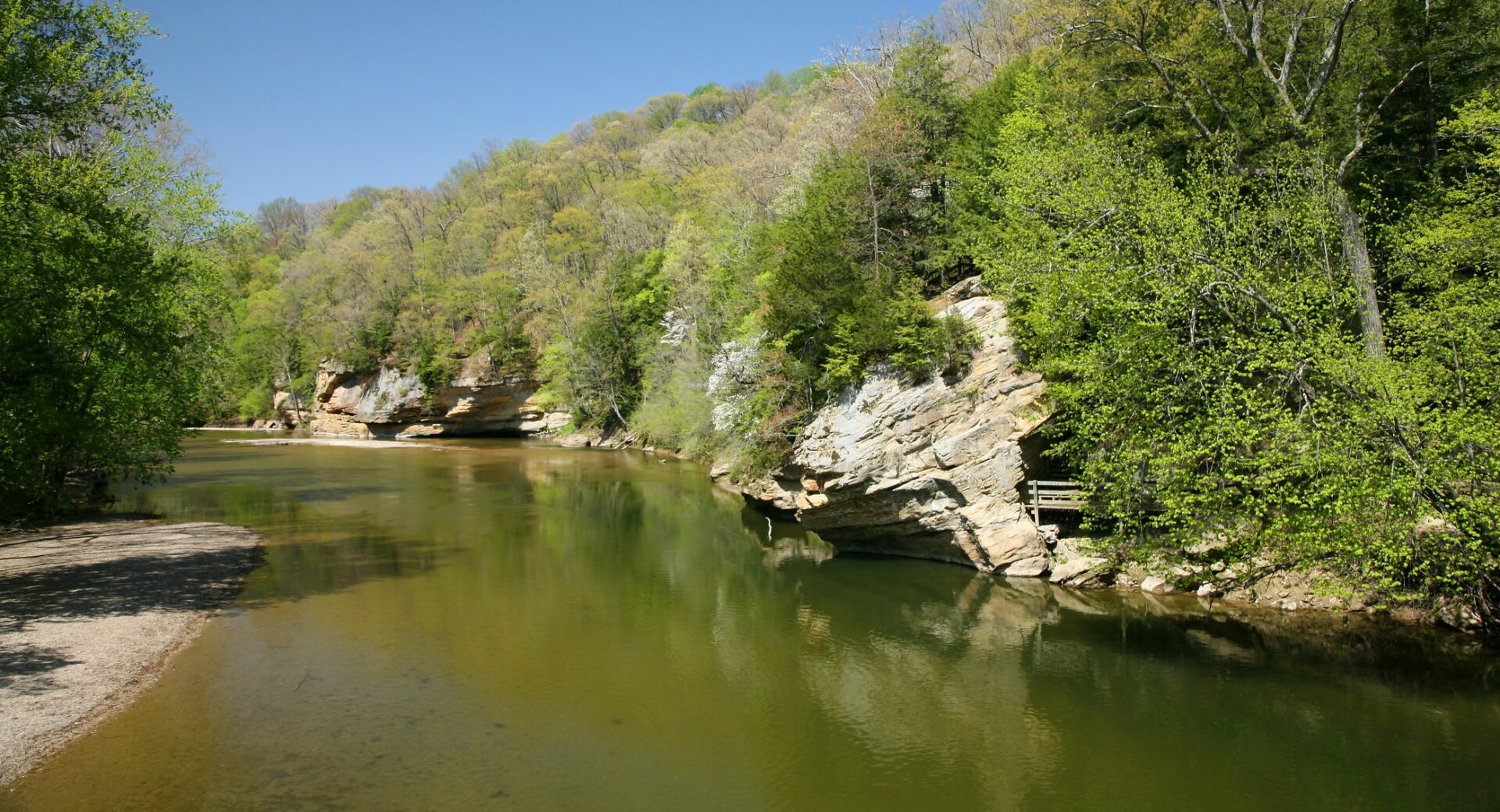Auburn, IL. Sugar Creek uncoils from an obscure spot in the Central Illinois prairie for just over fifty miles. Some sections of the creek amount to little more than a drainage ditch, while the depth of its turbid water in other spots is nearly head high. Where Sugar Creek ran through my grandparents’ land it was deep enough for a child to ponder what lived at the bottom, and wide enough to make tossing hedge apples from one muddy bank to the other a worthy challenge.
The creek flows slowly, even when it occasionally floods in the spring. As a child, I’d put on wellington boots and wade into the creek’s cold water, allowing it to reach the very edge of the top of my boots. Standing still at that moment and closing my eyes I could feel the nudge of the current and absorb the sounds of the woods around me: The shrill call of a Blue Jay. The groan of a dead branch pushed by a gust of wind. And in the background, the barely audible sound of the creek flowing. Such peaceful moments usually ended abruptly with a gush of cold water into my wellies.
To most people, my little section of Sugar Creek would seem to be the kind of place Cervantes describes in the famous first line of Don Quixote, “un lugar . . . de cuyo nombre no quiero acordarme”—a place whose name I don’t care to recall. At first glance what all one sees is muddy water, fallen limbs, and rubbish. My grandfather once even pulled out an old washing machine someone dropped over the side of the cement bridge crossing the creek on the edge of their property.
Few notice the creek as they drive down the nearby state highway crossing it. For those who do, it doesn’t amount to more than a momentary visual break from the endless acres of corn and soybean fields around it. There have been times in my life too when I didn’t think much about Sugar Creek, and yet it has remained with me, much like the hushed sound of its current on one of those wet spring days.
Although only a dwindling number of people recognize his name, no one has a stronger claim to be poet laureate of Central Illinois than Vachel Lindsay (1879-1931). His family home in Springfield, Illinois is now a museum and historic landmark. Lindsay famously wandered around the countryside, trading poems for food and shelter from Kentucky to Florida. Who knows if he ever crossed Sugar Creek, but in “The Fawns and the Stranger” Lindsay describes one of the pleasant byproducts of loving a place,
The fawns across the farmyard in the rain
Leap with a grace astonishing the eye.
They know the farmer, and they trust the farmer,
But watch the stranger with a weather eye;
And if the stranger quivers but a feather,
The fawns leap over the fence and say goodbye.
It wouldn’t be correct to say that a particular place, or the flora and fauna one finds there, return our affection. Yet, the more intimately we know a place—by sitting in it, walking through it, cultivating it—the more it reveals to us. It took dozens of walks through my grandparents’ woods to realize that it was Sugar Maple groves flourishing near its banks that provided Sugar Creek its name, not that its water was sweet.
With patience one can also learn things like how long it takes a Bull Frog to reappear and check if the coast is clear after diving for safety with a squeak at the sound of oncoming footsteps.
Some will call these navel-gazing trifles. True, there is much on offer in the world more exciting than tromping around on the muddy bank of a creek in the middle of nowhere. I’m unlikely to convince naysayers otherwise. Deep in their hearts though, they too remember moments during which the light that shone on me at Sugar Creek shone in their own lives.
Another Spanish writer, St. John of the Cross, in his “Cántico espiritual” asks, “A donde te escondiste”—Where have you hidden yourself? St. John then describes a lovers’ search for her beloved through wilderness until uniting with him in a flower-filled garden.
It was surely a beautiful garden, but if we are receptive, we too can find extraordinary things in ordinary places, like on the muddy banks of Sugar Creek.






2 comments
Jason Crye
I really appreciate this thoughtful comment, Russell–thank you.
Russell Arben Fox
This is a wonderful, humble meditation; I can relate to it a lot. We having running in front of our Wichita home a run-off ditch that feeds into Cowskin Creek, which eventually flows into the Arkansas River. The ditch is just that–a place for excess water to run. And yet, in the nearly 14 years we’ve lived in this home, we have walked along that ditch, which stretches over a mile, with our children many hundreds of time, pausing on the pedestrian bridge that crosses it, playing Pooh-sticks when they were little, now walking our dog along its banks. Frogs, turtles, ducks, and herons have been part our ecosystem, thanks to that ditch. Walking along it yesterday evening, together with our oldest daughter home for the first time in months and our youngest, I ran through all the memories we had of this place together. Your comment “the more intimately we know a place…the more it reveals to us” was never so true. So thank you!
Comments are closed.